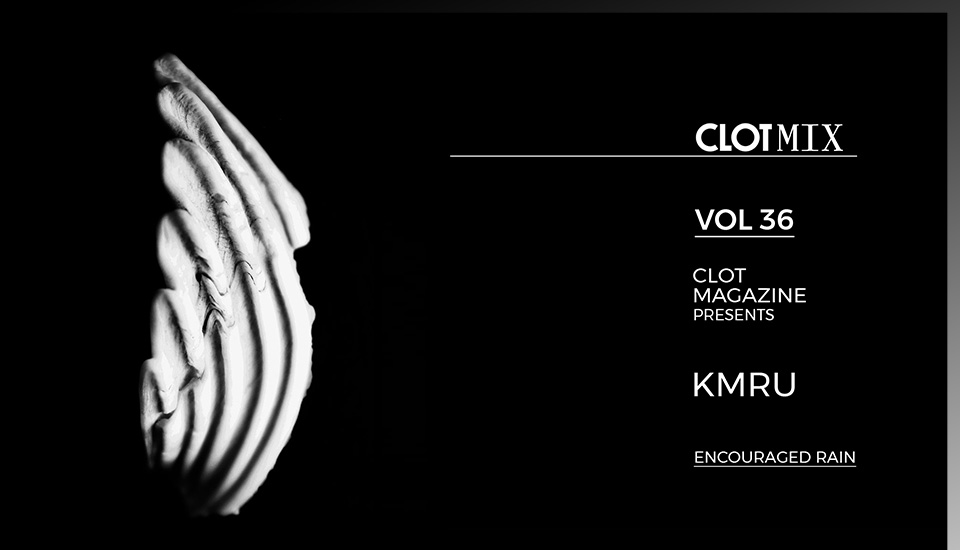Text by CLOT Magazine

Electronic musician and sound artist Josep Kamaru, aka KMRU, takes us on the first of December’s sonic journeys. Born in Nairobi and currently based in Berlin, KMRU is a sound artist and producer whose methods include field recording, improvisation, noise, machine learning, radio art and drones. With a paramount sound and visual sensibility, his work is reminiscent of Western ambient masters such as Lawrence English.
KMRU’s sound though is uniquely positioned between the rarely-married cultures of ambient and African music, entwining his compositions with field recordings from his native Kenya and the surrounding countries of East Africa.
Self-releasing his productions, these have been received very enthusiastically by both critics and the audience. In 2020, the artist released three albums that showed the depth and range of his sound: Peel, an LP of hypnotic drones on the avant-garde institution Editions Mego; Opaquer, a collection of vivid and dreamlike sound sculptures; and Jar, a dreamlike cassette of found sounds and analogue ambience. KMRU hasn’t stopped in 2021 with a bunch of new releases including Logue, an album that includes tracks written from 2017 to 2019, which represents an artist not only in command of his form but also willing to develop and evolve, ready to deconstruct and radically refocus his music to explore new contours of experimental and ambient sound design.
The mix he has prepared for CLOT, he shares, is a liminal narrative of falling asleep; each track feels like an episode of a hypnagogic state. I’ve been thinking deeply about dreams and nostalgia this past week and these tracks evoke this feeling, with a title as evocative as KMRU’s sound and visual universes
What was the creative process like for the production of your last EP? What were you technically (I’ve seen a picture where you are using a Lyra-8 synth, which is quite a fun piece of equipment) and conceptually (if so) exploring with it? Was it similar to your recent album Logue?
The process of ‘as it still is’ mainly focused on field recordings as the main instruments of the piece. As for the Lyra 8, I use it mostly for free improvised pieces, I like it for its spontaneity. I didn’t use it specifically for this EP though. And yes, the process is somewhat the same with some tracks from Logue.
What are your main inspirations for your productions these days?
Being outside.
Your sound feels very delicate and intricate, felt to be fully enjoyed in an immersive environment in deep listening. Are you consciously trying to awaken deep listening feelings with your music, or is it something that comes up naturally (somehow inherent to the nature of ambient music)?
Yes, I’m very present listening while making music, always thinking of the perception of the sound and how a listener would approach listening to a track, although leaving it open for the listeners’ experience.
I read that you discovered field recordings and environmental sounds through the work of Chris Watson, and you have started using them for your work. What do field recordings bring to your compositions? And how have you used them in your last productions?
When I first started recording sounds outside, I wasn’t aware of the discourse of field recording. I stumbled upon El Tren Fantasma album by Chris Watson, which led me to research more artists using field recordings in their work. I still use field recordings in my works as compositional tools for my work and as reflections of places I’ve recorded the sounds.
R. Murray Schafer devised the term “sound ecology” do you think sound recordists should promote a less polluted sound environment, or is this a matter of the inevitable evolution of the landscape?
I think sound recordists should be more aware of the surroundings they intend to record and have an intent before hitting the record button.
What is your relationship with novel technologies nowadays, and how do you use them for your practice? And how do you cope with technology (screen/digital) overload?
I tried not to stay on the screen the whole day. I have time offs where im mostly outside listening. I’m conscious of the amount of screen time I consume.






